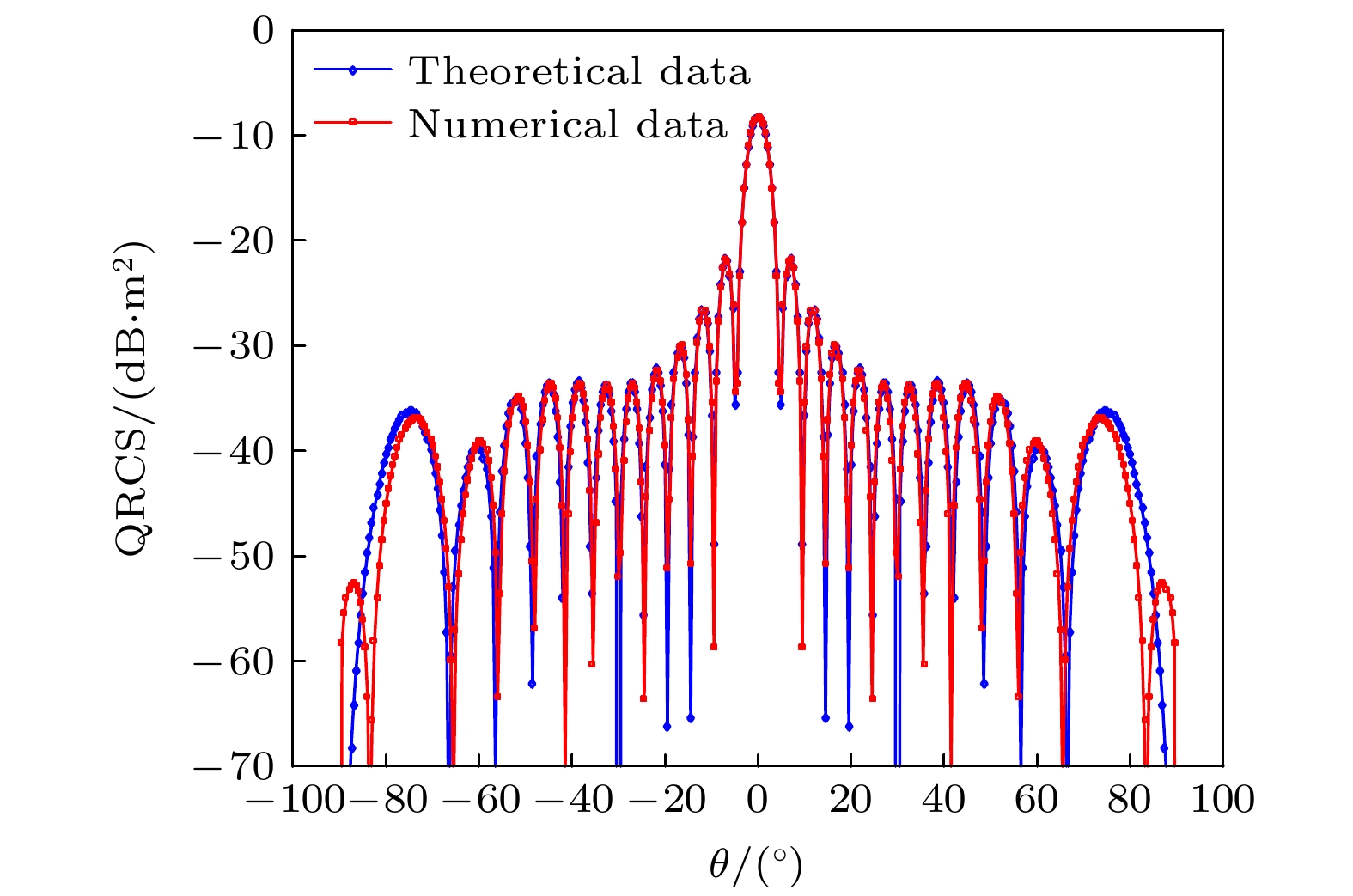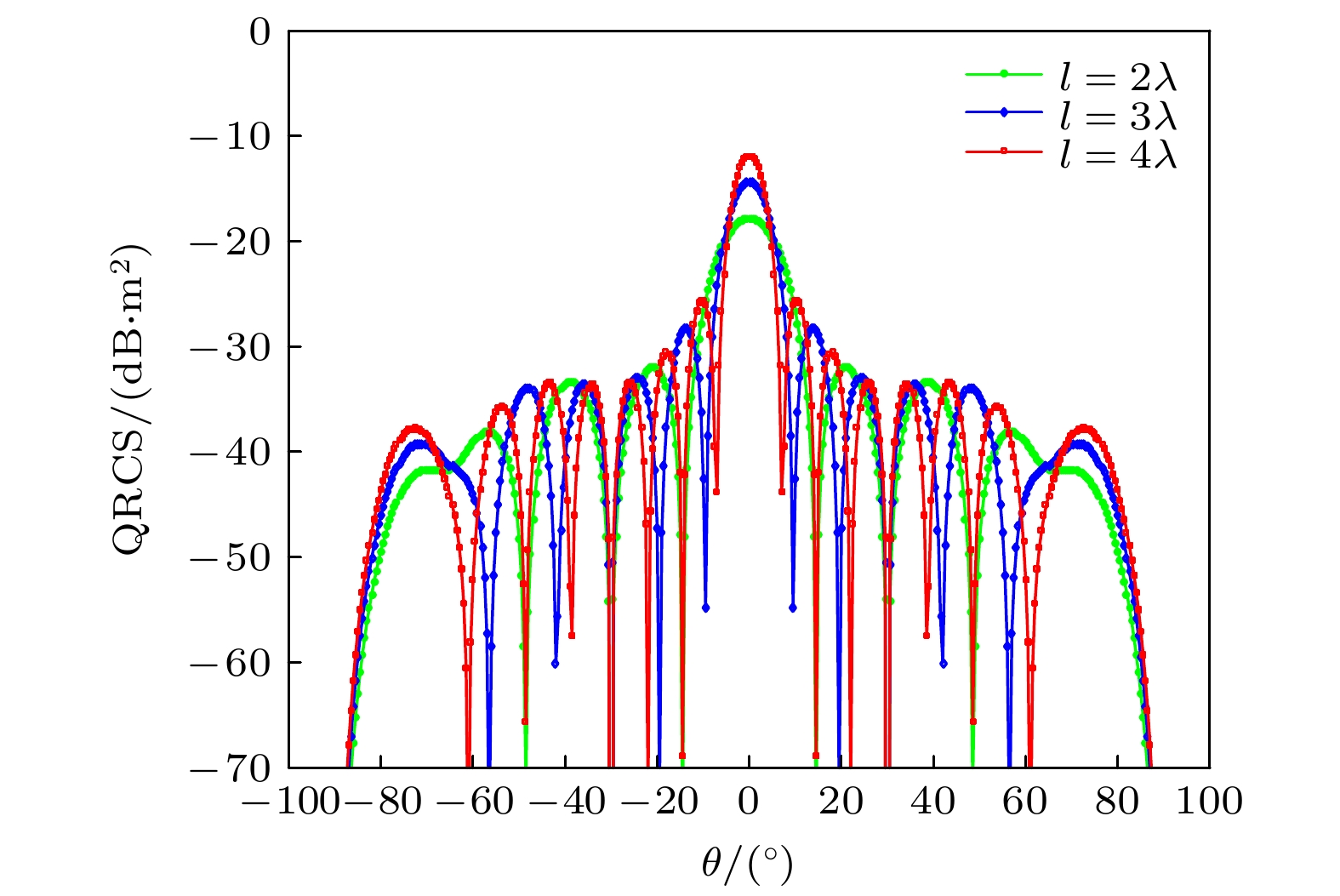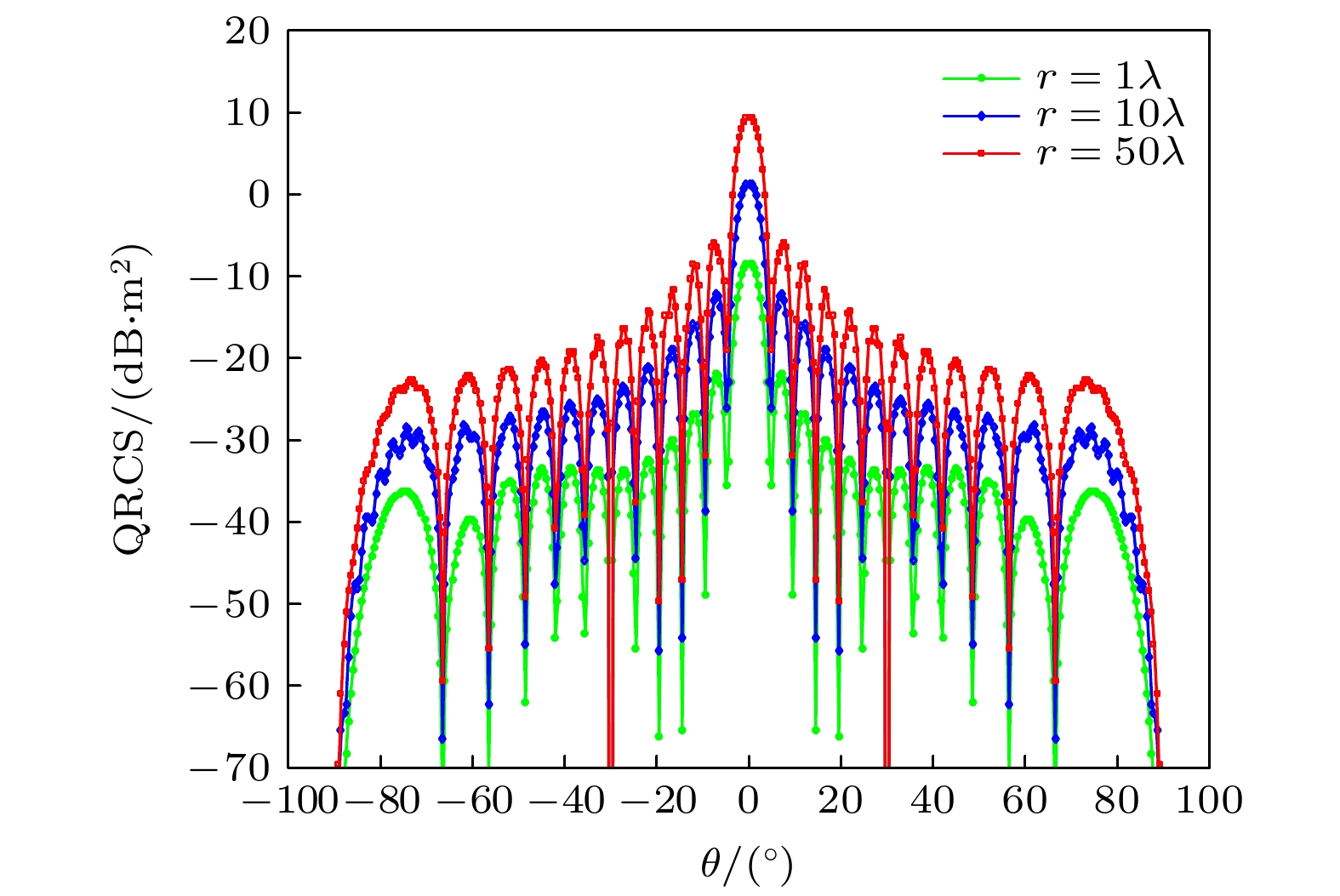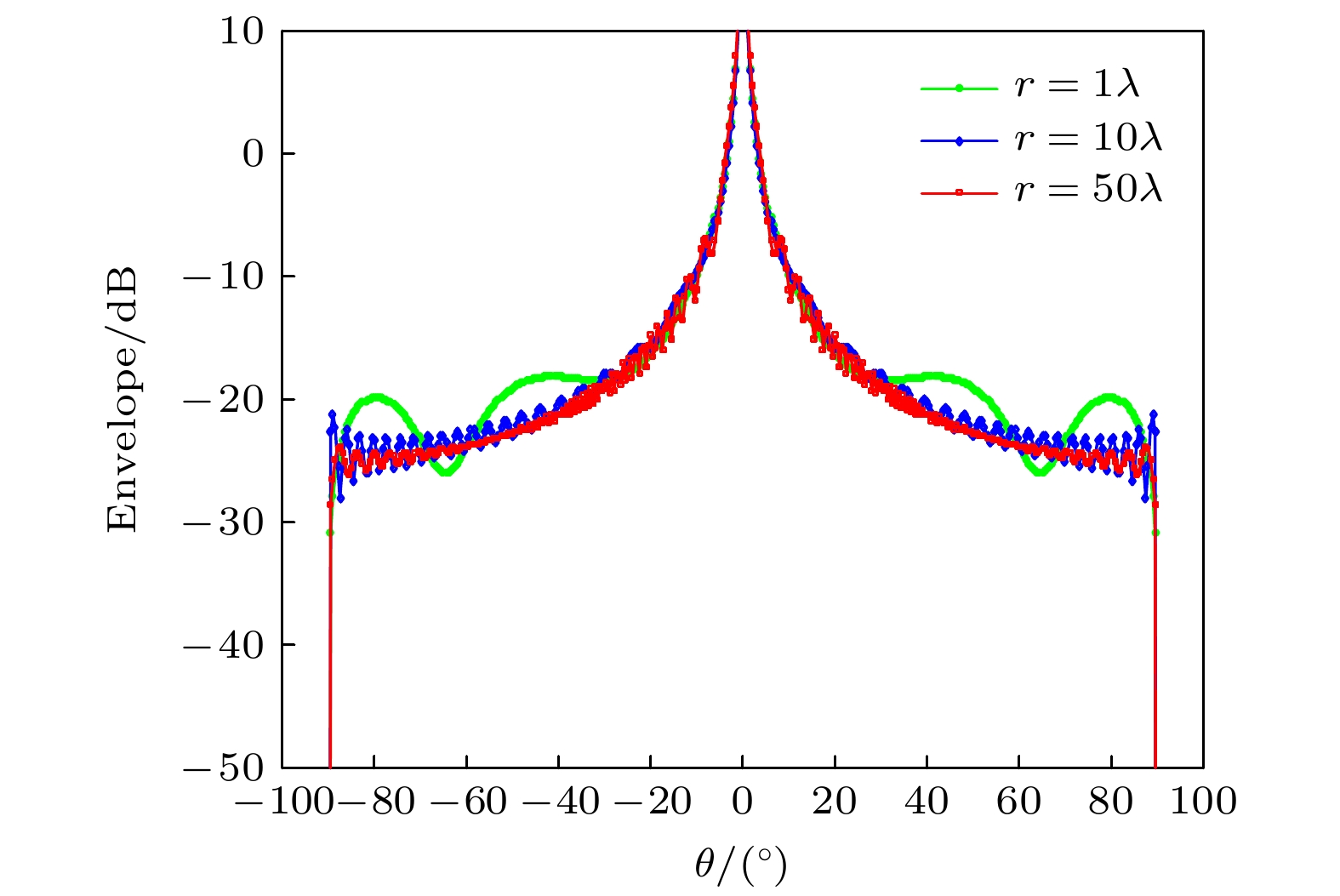-
To examine the single-photon quantum radar cross-section of cylindrical surface and its specific advantages over the classical radar cross-section, a photon wave function in which the distance vectors causing interference are decomposed is introduced in this study. A closed-form expression of the single-photon quantum radar cross-section of cylindrical surface is derived. The influences of the length and curvature radius of cylindrical surfaces with different electrical sizes are analyzed, and the closed-form expressions of the quantum and classical radar cross-sections of cylindrical surface are compared with each other. The analyses of the closed-form expression and simulation results show that the electrical length of the cylindrical surface determines the number of side lobes of the quantum radar cross-section; meanwhile, the curvature radius has a linear relation with the overall strength of the quantum radar cross-section, and the electrical size of the curvature radius determines the envelope of the quantum radar cross-section curve. Compared with the classical radar cross-section, the quantum radar cross-section of a cylindrical surface has the advantage of side-lobe enhancement, which is beneficial for detecting stealth targets.
-
Keywords:
- quantum radar /
- cylindrical surface /
- quantum radar cross section /
- quantum detection
[1] Jiang K, Lee H, Gerry C C, Dowling J P 2013 J. Appl. Phys. 114 2733
 Google Scholar
Google Scholar
[2] Lloyd S 2008 Science 321 1463
 Google Scholar
Google Scholar
[3] Lanzagorta M 2010 SPIE Photonics Europe, Brussels, April 12−16, 2010 p77270
[4] Brandsema M J, Narayanan R M, Lanzagorta M 2017 Quantum Inf. Process. 16 32
 Google Scholar
Google Scholar
[5] Brandsema M J, Lanzagorta M, Narayanan R M 2020 IEEE Aero. El. Sys. Mag. 35 58
 Google Scholar
Google Scholar
[6] Kang L, Xiao H T, Fan H Q 2014 Chin. Phys. Lett. 31 034202
 Google Scholar
Google Scholar
[7] 徐世龙, 胡以华, 赵楠翔, 王阳阳, 李乐, 郭力仁 2015 64 154203
 Google Scholar
Google Scholar
Xu S L, Hu Y H, Zhao N X, Wang Y Y, Li L, Guo L R 2015 Acta Phys. Sin. 64 154203
 Google Scholar
Google Scholar
[8] Fang C 2019 IEEE Sensors J. 20 2348
 Google Scholar
Google Scholar
[9] Fang C, Hui T, Liu Q F, Li T, Long X, Chen Y J, Liang H 2018 IEEE Photon. J. 10 1
 Google Scholar
Google Scholar
[10] 徐泽华, 李伟, 许强, 郑家毅 2018 光子学报 47 141
 Google Scholar
Google Scholar
Xu Z H, Li W, Xu Q, Zheng J Y 2018 Acta Photon. Sin. 47 141
 Google Scholar
Google Scholar
[11] Liu K, Xiao H, Fan Q 2014 IEEE Photonics Technol. Lett. 26 1146
 Google Scholar
Google Scholar
[12] 陈坤, 陈树新, 吴德伟, 王希, 史密 2016 光学学报 36 1227002
 Google Scholar
Google Scholar
Chen K, Chen S X, Wu D W, Wang X, Shi M 2016 Acta Opt. Sin. 36 1227002
 Google Scholar
Google Scholar
[13] [14] Fang C 2017 IEEE Photon. J. 10 1
 Google Scholar
Google Scholar
[15] [16] Fang C 2019 IEEE Access 7 141055
 Google Scholar
Google Scholar
-
-
[1] Jiang K, Lee H, Gerry C C, Dowling J P 2013 J. Appl. Phys. 114 2733
 Google Scholar
Google Scholar
[2] Lloyd S 2008 Science 321 1463
 Google Scholar
Google Scholar
[3] Lanzagorta M 2010 SPIE Photonics Europe, Brussels, April 12−16, 2010 p77270
[4] Brandsema M J, Narayanan R M, Lanzagorta M 2017 Quantum Inf. Process. 16 32
 Google Scholar
Google Scholar
[5] Brandsema M J, Lanzagorta M, Narayanan R M 2020 IEEE Aero. El. Sys. Mag. 35 58
 Google Scholar
Google Scholar
[6] Kang L, Xiao H T, Fan H Q 2014 Chin. Phys. Lett. 31 034202
 Google Scholar
Google Scholar
[7] 徐世龙, 胡以华, 赵楠翔, 王阳阳, 李乐, 郭力仁 2015 64 154203
 Google Scholar
Google Scholar
Xu S L, Hu Y H, Zhao N X, Wang Y Y, Li L, Guo L R 2015 Acta Phys. Sin. 64 154203
 Google Scholar
Google Scholar
[8] Fang C 2019 IEEE Sensors J. 20 2348
 Google Scholar
Google Scholar
[9] Fang C, Hui T, Liu Q F, Li T, Long X, Chen Y J, Liang H 2018 IEEE Photon. J. 10 1
 Google Scholar
Google Scholar
[10] 徐泽华, 李伟, 许强, 郑家毅 2018 光子学报 47 141
 Google Scholar
Google Scholar
Xu Z H, Li W, Xu Q, Zheng J Y 2018 Acta Photon. Sin. 47 141
 Google Scholar
Google Scholar
[11] Liu K, Xiao H, Fan Q 2014 IEEE Photonics Technol. Lett. 26 1146
 Google Scholar
Google Scholar
[12] 陈坤, 陈树新, 吴德伟, 王希, 史密 2016 光学学报 36 1227002
 Google Scholar
Google Scholar
Chen K, Chen S X, Wu D W, Wang X, Shi M 2016 Acta Opt. Sin. 36 1227002
 Google Scholar
Google Scholar
[13] [14] Fang C 2017 IEEE Photon. J. 10 1
 Google Scholar
Google Scholar
[15] [16] Fang C 2019 IEEE Access 7 141055
 Google Scholar
Google Scholar
Catalog
Metrics
- Abstract views: 6432
- PDF Downloads: 93
- Cited By: 0














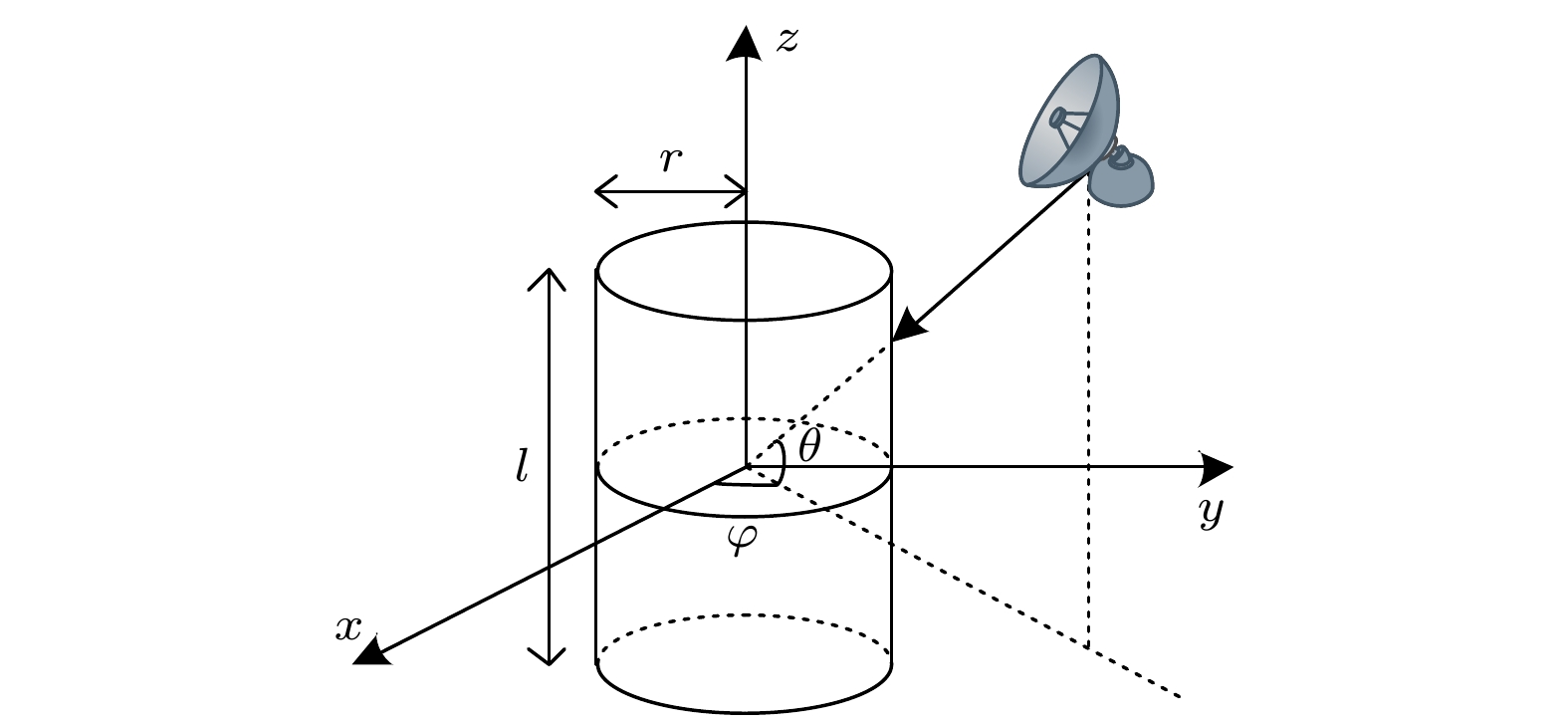
 DownLoad:
DownLoad:

